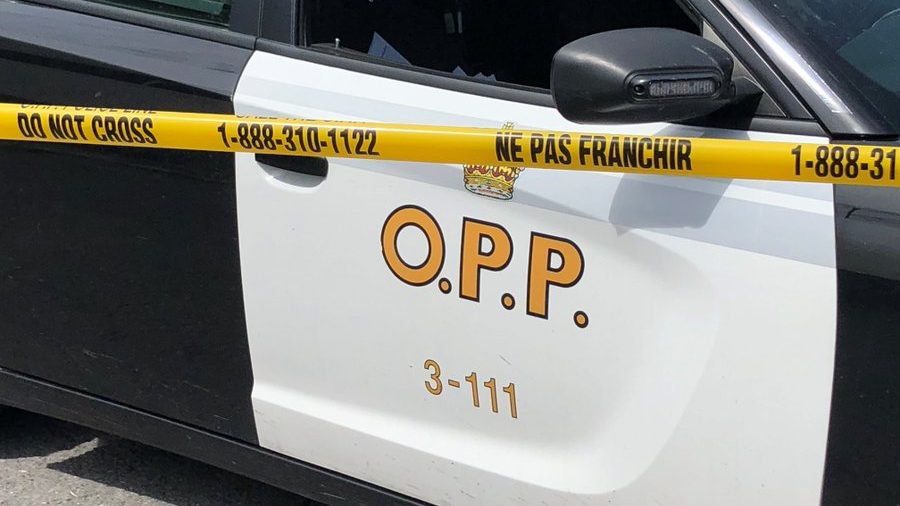Not just an urban issue: Recent spike of fatal overdoses in Leeds, Grenville and Lanark district concerns health unit
Posted Jul 27, 2021 08:51:00 PM.
A recent spike in overdoses has the Leeds, Grenville and Lanark District Health unit worried.
According to the health unit Monday, there have been multiple fatal overdoses in the past 10 days — a spike that has been identified through the Overdose Early Warning System that collects overdose information from local hospitals, EMS and through the online reporting tool.
“A lot of people still believe that substance use and crisis is primarily an urban issues, and it’s definitely not,” Jennifer Adams, public health nurse at Leeds, Grenville and Lanark District Health Unit, told The Sam Laprade Show on Tuesday. “For our area, what we’re seeing in particular is a pretty significant spike in case starting in 2020 and has continued — and even escalated further moving in 2021.”
For the first six months of 2021, Adams says the area — which is situated between Ottawa and Kingston, and includes Kemptville to Gananoque and Pakenham — has already seen 195 overdoses (both fatal and non-fatal). That’s compared to all of 2020, which saw a total of 165.
“Overdoses are happening in all walks of life,” Adams explained. “We’ve got folks who are in their teens that are overdosing, right up to 65 plus — men, women, from all social classes. I think that’s one of the biggest struggles that we have with the overdose crisis is that it’s touching every walk of the community.”
But, Adams adds, she thinks the COVID pandemic has highlighted the issue, showing the “terribly situations” people are in in terms of substance use.
“Often substance abuse is a bigger symptom — a bigger symptom of what’s going on in our society and community,” she said. “Once the pandemic hit, and coping mechanisms and their social connectedness and the way they connect with other people was really limited. We, unfortunately, saw people turning to more unhealthy ways of coping — but that’s what people needed to do in order to get through the pandemic.”
And unfortunately, she says, the pandemic has taken the spotlight away from the overdose crisis.
“We’re five years into the overdose crisis and it’s now gone under the radar for the most part,” Adams explained. “Now we’re seeing the ramifications of that in that our overdoses are going through the rough and our fatalities in our area have doubled in a year.”
If it wasn’t for the unsafe supplies that are being circulated within communities, Adams believes they wouldn’t be in the situation they are today.
“The reality is we’re never going to see a society without substance abuse — we never have and we never likely will. So what’s happening right now is the result of an incredibly toxic supply of substances out there.”
While users think Naloxone could be their savior in an overdose situation, the health unit warns that it may not be as effective in reversing overdoses because supplies are becoming more toxic.
Ottawa, on the other hand, hasn’t seen an overdose boom specifically happen in the last 10 days, but Ottawa Public Health does say they’ve seen a similar steady increase in overdoses over the years.
“Local partners have continued to notice an increase in overdose activity over the past year largely linked to reported illicit fentanyl use,” OPH told CityNews Ottawa. “There is no easy way to know if fentanyl is in the drugs you are using. You can't see it, smell it or taste it. Any drug can be cut (mixed) with fentanyl. Even a very small amount can cause an overdose.”
In 2020, OPH counted 123 deaths attributed to opioid overdoses. Data has not yet been made available for 2021.
So far for 2021 (between January and April), there have been 276 visits to emergency rooms due to an opioid overdose. That’s compared to the 177 reported during the same time last year, and the 160 reported in 2019.
OPH says it continues to advance its priorities of the Ottawa Community Action Plan to reduce overdose and other harms from substance use and make tangible improvements in mental health across the lifespan.
“Key initiatives continuing in 2021 include working to address stigma related substance use, expanding access to harm reduction and naloxone programming, and collaborating and integrating across the system to centralize access to substance use and mental health services,” OPH continued. “Expanding current services, safer supply initiatives seek to decrease the risk of accidental overdose and improve health by providing access to prescribed pharmaceutical opioids and further connect people who use drugs to integrated, wrap-around health, social and treatment services.”










